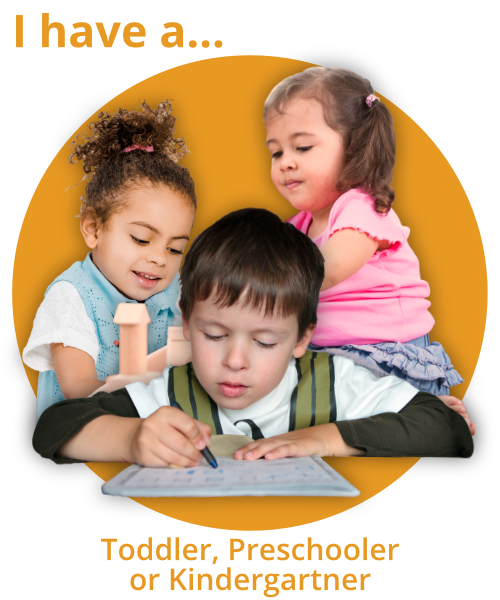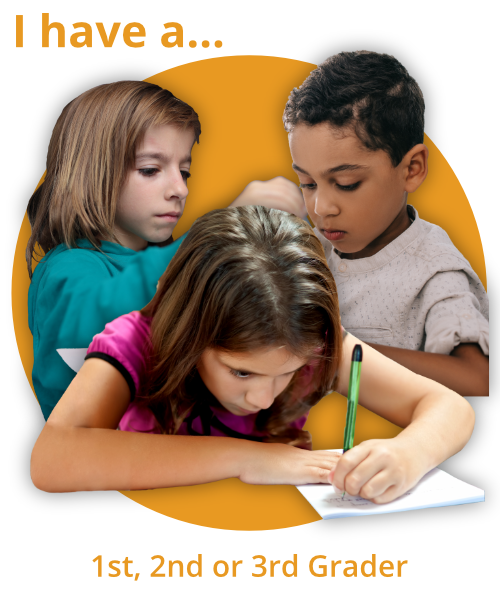The Iconic Dining Room Table!
I'm Aubrey Hargis, Montessorian and mom of two. I'm here to make Montessori in the home easier for you. So you can enjoy your children and reap the benefits of a developmentally based educational method without sacrificing your budget or feeling like you're not doing enough. It's not always easy, but it is worth it...because education is a journey we take with our children, and the opportunities for learning start over every day.
Hey Sweet Friend
We are going to be diving into talking about your dining room in the context of schooling at home with Montessori, and over the next few weeks, really just thinking about every single place in your home where learning might occur, that you might need to do some little tweaking or cultivating to ensure that it's the smoothest and easiest environment for your child to dive into their own learning. This is almost like a mini-course--so be sure to start with the very first episode, which is called “Your Own Little Schoolhouse.”
Remember, you’re a homeschooler, even if your children go to classes part-time or your children are not in your care 100% of the time. There are so many ways that you can piece together a homeschool life. It doesn't just have to be the child all day with one parent who is the homeschooler.
Meet Ashley
Meet Ashley, Montessori mom of one, living in Ohio, USA. She’s an alumna of Homeschool of the Redwoods Primary and a member of Constellation. We are featuring members like Ashley so you can get a sense of what it’s like to belong to the Montessori homeschooling community! You can read more about Ashley and her family here.
Let's Discuss Dining Rooms!
If you’re following along with our podcast mini-course, now is a good time to get a notebook and be ready to write down some ideas! I am going to go through just some of the ways that we have used our dining room as homeschoolers. I hope that you will start to think about your dining room...either in a different way or to realize that you already have a lot in place to make this space work for your family anyway!
First of all, we know not everybody has a dining room. I think it's important to start off with that. In the context of this little discussion, your dining room is simply the place where your family eats. So maybe your kitchen and your dining room are merged together! Maybe like us, your living room and your dining room are a shared space! You may eat on the couch with your children, or maybe you and your children sit down at a little table together. Maybe you dine outside! For the purposes of today’s discussion, wherever it is that you share meals with another person is going to be the dining area that I am talking about.
The Dining Table: a Homeschool Icon
The dining room table (or kitchen table!) is kind of an iconic thing for homeschoolers. In fact, it's something that my friends and I have laughed about in the past. People have the image of homeschoolers sitting at their tables all day, learning, completing workbooks. The truth is we're not! We're outside a whole lot. We're on the couch, and we're in the bedroom a lot. We're all over our house--the dining room is just one of the places that we can learn. I think from the truth if you were to survey homeschoolers across the board, it is a place where people generally take meals together and we share food. So let’s start by looking at it from that perspective!
Making the Dining Room Accessible
This is a key to bringing Montessori into this space--wherever it is. Can your child get up easily into their chair, or the couch, or wherever they're supposed to sit? If they're walking, and they are headed there with a bowl of soup, can they get to where they need to be? What is the procedure for that?
You actually might want to go and try this yourself! Scrunch down your child's level, waddle across to where your child generally eats, and look at it from your child's height and perspective. See what they see. Are they looking under the table rather than seeing the top of the table? Do they see an easy pathway to get up to their chair? Are they eating generally with you at a regular-sized table, or a low table?
If your child is at a regular dining table, one of the things that I did invest in as a new parent was a chair that my child could climb up into. We used the Tripp-Trapp. I got mine off of Craigslist! We used those things for years and years. They were great because even our little toddlers could go over to the chair and start climbing up. The age that your child is ready for such a thing really depends on what's going on developmentally with your children. Some children will be ready for it sooner, some children will still be a little nervous about the height of it. I think it's so much better than a high chair because it really is like a regular chair for them that brings them up to adult height so that you can all sit at your table together.
These chairs are an issue if the child is carrying a bowl of soup. If your child is trying to carry that bowl of soup and navigate the Tripp-Trapp chair with stairs, you're gonna have some issues. I'm not saying it's a no, that if your child can't get up there with a bowl of soup, then you shouldn't have that situation, you just have to be prepared to practice with your child the steps that have to happen for that to be accomplished safely. So many things get easier for you and your child if you actually practice it first. If you have older children, that's still true.
Another practical question is: what happens after mealtime? You've got dirty dishes on the table, your child gets down off their chair, what happens next? In Montessori, we want to think through these things. There are a lot of possible solutions. Maybe your child brings the dirty dishes to the kitchen and puts them on the counter. Maybe they bring them right up to the kitchen sink and wash them. Maybe they put them right into the dishwasher. We have at times used a dish tub; the children place their dishes in the tub and at the end of the meal or day, we wash them.
You will also need a procedure for cleanup. So after your child has taken care of their dirty dishes, what is the procedure? Maybe some soup was spilled at the table, how will you handle that? Often as parents, we rush in and wipe their places off naturally...but it can be really, really helpful to teach your child what to do. Give them that independence! If you're going to have your child take care of that mess, how do they do that? Are they going to use a spray bottle? Are they going to use a wet rag? Where would they get that wet rag or their cleaning supplies so they can go and get them right away? Do you have them out and accessible, or are you going to bring them to the table and keep them there?
Making the Dining Room Beautiful
It’s also important to make that space where you are eating beautiful in some way. Right now I have some brass candlesticks that I inherited from my mom who got some from her mom who I think got them from her mom and maybe her mom after that. I know they came from Scotland long ago from some ancestor of mine and so I have them on the table and they make me happy! I've been lighting candles with children ever since I had toddlers. Just because you have a little ones doesn't mean that you can't have candles. You do have to supervise though, and if you can't trust your child not to stick their finger in the middle of that candle flame, then I highly recommend some flameless candles! They make really great beautiful flameless candles these days that you can turn right on--I think that would be very toddler appropriate.
I also like to beautify my table with flowers. So when I'm thinking about it, I might grab some cheap flowers from the grocery store. If you have an outdoor area where you have a garden, you could go and collect flowers from your own backyard. That would be the best! Your child can maybe cut a few flowers and then put them in a little vase and decorate the table with them. Flower arranging is a very popular Montessori lesson! Sometimes rather than candles or flowers, I have a big basket full of fresh fruit. Sometimes we use knick-knacks from around the house; Sometimes I create a little Waldorf playscape!
Let’s Talk Weaning Tables
Now, if you go on to the Montessori community blogs, Instagrams, or other social media, you're probably going to run across the weaning table. It doesn't have anything to do with breastfeeding. The word weaning really just means the introduction of solid foods. In Montessori infant classrooms (called Nidos!) they often have teeny tiny little low tables to the ground, so even babies can sit and start to enjoy solid foods for the very first time.
We never did that at our house! I always either sat my babies in my lap, and they would pick food off of my plate (we did baby-led weaning). My brother’s family is also a Montessori family, and they actually just ate on the floor with my niece when she was very little, she would just sit in a lap and they would sit on the floor together...no table was unnecessary. A lot of Montessori parents enjoy weaning tables--and they certainly are adorable and specific to Montessori.
Getting Practical
There were also a lot of practical life experiences that happened at that dining room table when my children were young. For example, when we were going to have family meals together, they would help with setting the table! I know it doesn't sound “educational,” but it totally is. Think about all of the skills that are needed in order to set a table, remembering the sequence that things need to go onto the table, the counting of napkins, placemats, and all of the dishes. It’s great practice with one-to-one correspondence! You take one fork and put it on the one napkin and another fork and put it on the next napkin until you have filled out the entire table with forks and napkins in their right places! The child is learning procedure, order, etiquette, AND building math skills.
These practical dining room tasks also help fine motor development, because as they use their pincer grip they strengthen their hands, whether it's through serving the food or doing the cleanup. This gets the fingers ready to learn how to write, and it all comes first before we really get into anything like learning how to read or teaching children how to do math operations. The practical stuff comes first and it's so important.
The Social Value
We still set the table for dinner at our house, even though my kids are bigger. I keep reading online how important it is to have meal times together as a family! When I think about the origins of our social engagement, clearly, it's people sitting around a campfire chatting with each other singing songs with each other, breaking bread together. It was a social experience. In modern times, it feels like we have kind of removed a lot of the social experience from eating. A lot of tech has infiltrated into our ideas of mealtime--and it has happened at our house, too.
As a family, we don't have every single meal together, in an ideal way. But we do have at least one meal a day together. It’s been important to me as a parent to emphasize that meal times are a time to be together. Now that my children are older, I don't necessarily require that everybody attend at the dinner table and make a big fuss about it. But I do think having the ritual and the habit has been valuable: we set our table together, we gather together, we have a little conversation together, and then we're done. We can go back to our own individual things. Children can go back and be excused anytime and go play, they don't even have to ask to be excused at our table, they just get up, tidy up, and move on. This is all part of the Montessori way of life. Celebrating being with each other and staying really present in the moment.
A Place to Learn and Play
While we do homeschool in many other locations, inside our house and outside of it, we use our dining table a lot for homeschooling. We use it for playing games as a family. It's where we do a lot of collaborative learning. I tend to teach all of the grammar lessons at that dining table, math usually happens there--any task that needs a big surface. We don’t ALWAYS work here, but it is an available resource for us that we use a lot.
I also tend to keep a dry erase board close by to the dining room table. When we come together and we eat breakfast, it helps to kind of start the day by having a little bit of a rhythm reminder. So on our dry erase board, I would write kind of the itinerary for the day: the things we're going to do and how the flow of the day looks.
An Ode to Our Dining Table
I love our dining table. I love to go sit and work there myself. I bring my laptop up there, I drink my tea or my coffee, I do my water coloring there. What I’ve found was that I really wanted to have a dining table that I love to be at, so that family would love to gather at it as well. It's a special place in our home. It's a great place where we have some big discussions, conversations about life and just politics or you know, anything will come up because we are there together.


